Written on December 23, 2013
By Tony
in Handguns, Semi Autos
The S&W model 422 was originally brought out to be a less expensive, and most likely less accurate version of the S&W model 41 target pistol. It succeeded in being less expensive, and I suppose it may also be less accurate, but it’s hard to say for sure.
My model 422 is very well worn. The owner who had it before me bought it new, and said he fired over 100 thousand rounds through it before selling it to me. I’m not sure if that number is correct, but the gun had certainly seen plenty of use.
One of my favorite things about the 422 platform is it’s ability to be easily adapted for suppressor use. Because the barrel is tensioned from the factory, all you need to do is remove the factory tension nut, and replace it with a threaded adapter. The one on my pistol is an older version, and newer ones are shorter and less obtrusive. Because the barrel sits so low in the gun compared to the slide and sights, there are no issues with seeing over a suppressor like there are with some other pistols. You could actually mount a 1.5″ diameter suppressor and still use the sights.
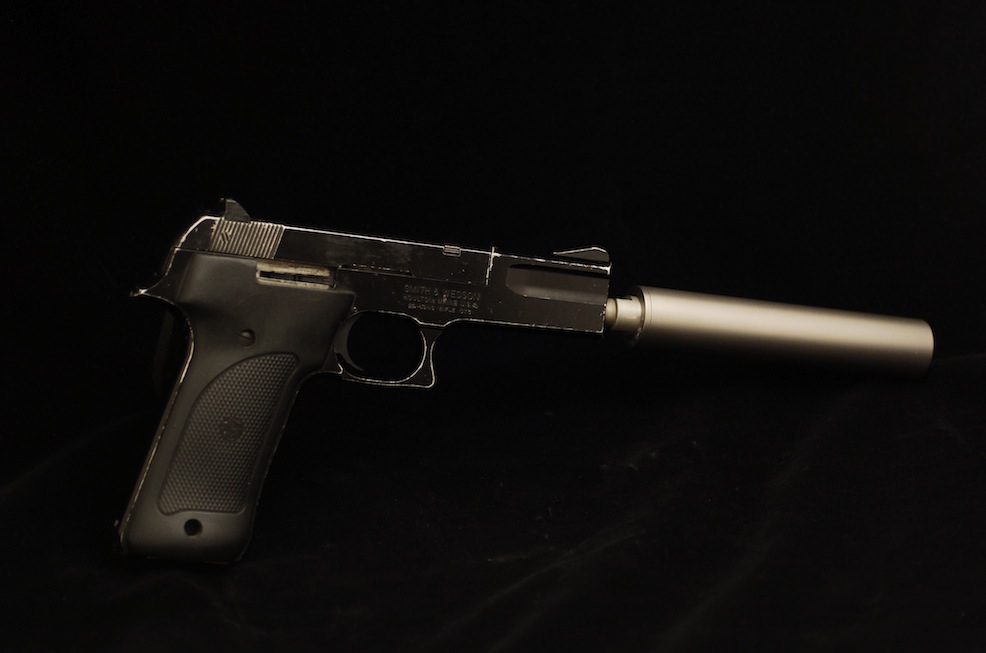
Since my model has a 4.5″ barrel, almost all of the bulk pack and high velocity (not hyper velocity) ammo stays subsonic. Some ammo is exceptionally quiet, such as CCI ‘quiet’ ammo. (go figure)
Here’s a video showing just how quiet the gun can be:
Written on December 22, 2013
By Tony
in Handguns, Revolvers
The S&W model 16-4 is a K-frame revolver chambered for the .32 H&R magnum cartridge. The dash 4 designation comes from the engineering changes incorporated since the dash 3 revolver. In this case, they are for the new chambering and the full under lug.
The 16-4’s where available with 4″ 6″ and 8 3/8″ barrels. Mine has a 6″ barrel. All barrel lengths had adjustable sights and “combat” grips like the ones you see on my revolver pictured below. My revolver was sent back to the factory after purchase and converted to single action only. This was a popular conversion for certain types of target shooting. Since I only shoot targets with the revolver anyways, and almost always fire such guns in single action mode, it didn’t bother me at all.

All model 16 revolvers are known for superb accuracy. the Model 16-4 is no exception, and my example shines. With 115 grain SWC bullets loaded at 900-1000 FPS, I’m not sure it’s actually possible to miss with the gun. It likes RN bullets as well, and wadcutters, and RNFP’s, and…. Well, it just seems to like everything.
Due to the weight, and the replacement cost, I don’t often carry the 16-4 in the field, and instead rely on a J-frame sized gun, or occasionally the Taurus 761. If I had a 4″ barreled version, perhaps I would carry it more often, but as it is, I’m perfectly happy using the 16-4 for target shooting and plinking, and using other guns for small game and trail duty.
Written on
By Tony
in Handguns, Semi Autos
A while ago I posted about my all stainless steel Charger type pistol. I mentioned that I would be updating the pistol as things went along, and since I’ve made some changes to the pistol, I figured I’d update here as well.
Since the last post, I’ve added a Medium eye relief scope (2.5X) and a Kidd barrel. The Scope was a gunshow bin buy scope, and it came without the adjuster caps. Since replacement caps would have cost more than I paid for the scope, I haven’t worried too much about them. The Barrel was purchased from Tony Kidd when he was having a sale earlier this year. The Kidd barrel is extremely well made. It’s also attractive, and accurate. And it should be no surprise, it also added more weight to the pistol.
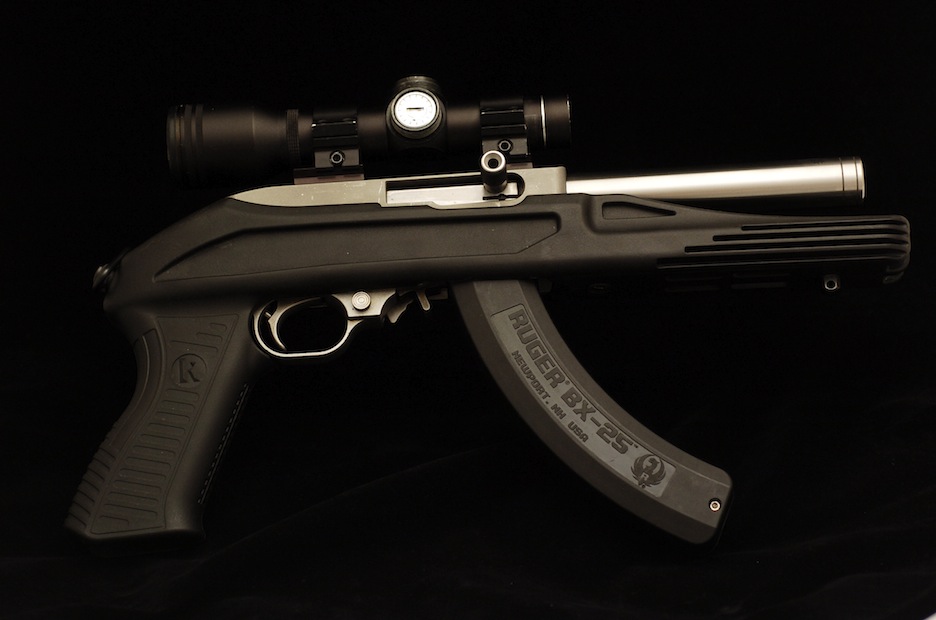
You can’t tell from the photo (or in person) that the barrel is threaded, at least, not until you unscrew the thread protector. The finish is so well machined, that it’s literally impossible to see where the barrel stops and the thread protector starts.
I have fired a few magazines through the gun, but I forgot to get photos of the groups. After the holidays, I’ll get back to the range, and shoot some groups and show you just how well the thing shoots.
The only complaint that I have thus far is that the barrel is too long to keep cheap bulk pack ammo subsonic. But at least the added length helps with cycling, and so standard velocity ammo runs through the gun just fine. SV ammo of course, is subsonic by nature, but it’s also more expensive…
Written on December 20, 2013
By Tony
in Revolvers
The Taurus Model 74 in my collection dates to sometime in the 1970’s. It’s a blued steel gun, and was available in nickel as well. It’s likely that it was made before Taurus was making SS guns. The front site is a little funky looking because of how tall it sits of the pencil thin barrel, but it seems to work okay.
The Model 74 is the predecessor to the model 741 that I wrote about earlier. The 74 is much cruder in machine work and finish when compared to the later 741. It is roughly J-frame sized, and hold 6 rounds of .32 S&W long. The rear sight is adjustable for windage and elevation, though it seems to be somewhat limited in range. The 3″ barrel is pencil thin, and the revolver is very lightweight. Taurus also made the model 73 revolvers a little later, they were fixed sight models, and had slightly heavier barrels. Most consider them to be more aesthetically pleasing.
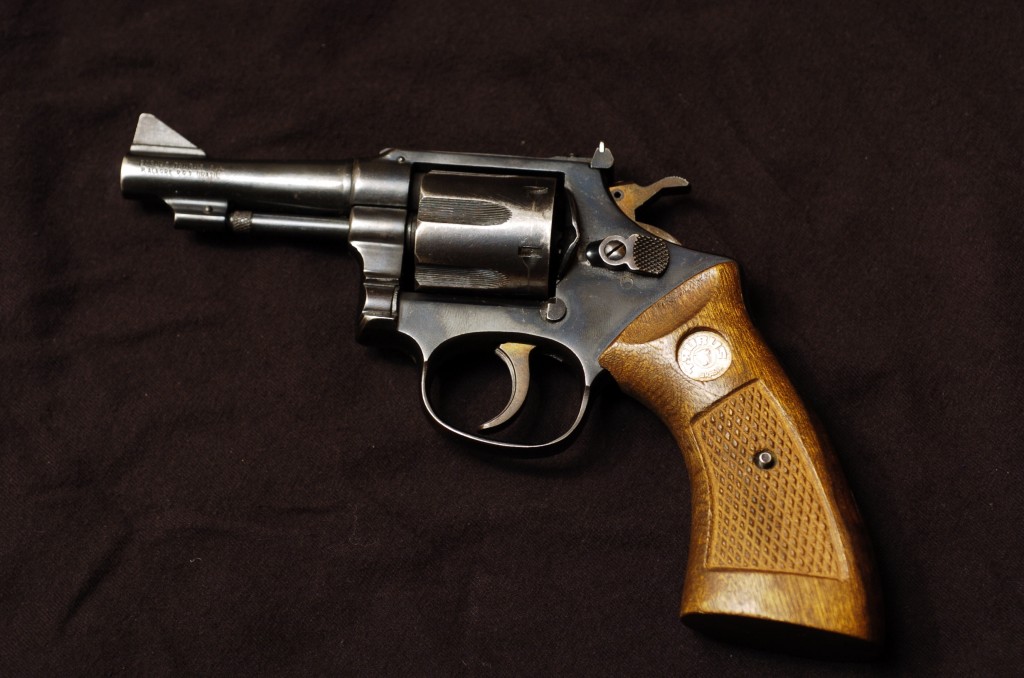
The firing pin is hammer mounted, and the double action trigger pull is a bit heavy, but smooth. The single action pull is stiff, but not unreasonable. The hardwood grips aren’t very well finished, but functional enough. As you can see in the photo, there are ridges in the cylinder fluting. Taurus did away with this sometime in the late 70’s or early 80’s from what I can tell, and the aesthetics of their guns improved immensely when they made that move. The model 73’s seem to have all been made with the smooth flutes.
The gun is accurate enough, but due to the sight adjustment limitations, Only lighter bullets can be put on target. One day I’ll modify the rear sight a bit, and see if that gives me enough room to shoot heavier bullets to point of aim.
I think with a little work, the little model 74 could be made into a very nice little kit gun. Maybe one of these days, I’ll get around to doing the work to make that happen…
Written on December 19, 2013
By Tony
in Revolvers
The Taurus model 76 and 761 are K-frame sized Revolvers built by Taurus in Brazil to compete with the S&W model 16. The Taurus model 76 and 761 differ only in the chambering, with the 76 being chambered for .32 S&W long, and the 761 being chambered for the longer .32 H&R magnum. My revolver is a model 761 in .32 H&R magnum.
When S&W chambered their model 16 in .32 H&R magnum, the new suffix for the model was -4 (S&W model 16-4) as there had already been other engineering changes. Along with the new chambering, the model 16-4 received a new full under-lug on the barrel. The Taurus model 761 didn’t receive the full lug with the new chambering, and as a result, carries less weight.
My model 761 has nice looking, but small hardwood grips, and excellent sights. The Firing pin is frame mounted, and the finish on the gun may not be as nice as the finish on the S&W 16-4 that I own, but it’s certainly serviceable.

I have shot my model 761 enough to know that it’s quite accurate, but haven’t spent enough time with it to really wring it out. Being a K-frame sized gun, it’s not too large for field carry, but since I have several J-frame sized guns that are superbly accurate, I don’t often carry the 761 in the field.
My overall opinion of the model 761 is positive, the only potential detractors are the not so great grips and a less than perfect factory finishing job (not bad, but not perfect). The good points are the excellent caliber, the great sights and good accuracy, it’s also a very nice looking pistol, with good lines.
Written on
By Tony
in Revolvers
The Rossi M293 is a bit of a mystery. I have only become aware of a total of 3 of them in the world. I’m certain there are more, but the owners have kept very quiet about them.
I got mine several years ago from a dealer with a table at a gunshow. He had purchased an estate, and the Rossi was one of the estate guns. It’s Roughly the size of a K-frame S&W, and holds 6 rounds of .32 S&W long. From the research I’ve done, it appears to date from about 1981 or 1982, and was imported to Canada before coming to the states. There is speculation that it was intended for Olympic style centerfire competition, but that is very hard to believe, as it’s far from the standard fare for such competition. It was almost certainly made for some type of competitive shooting though, based on the design.
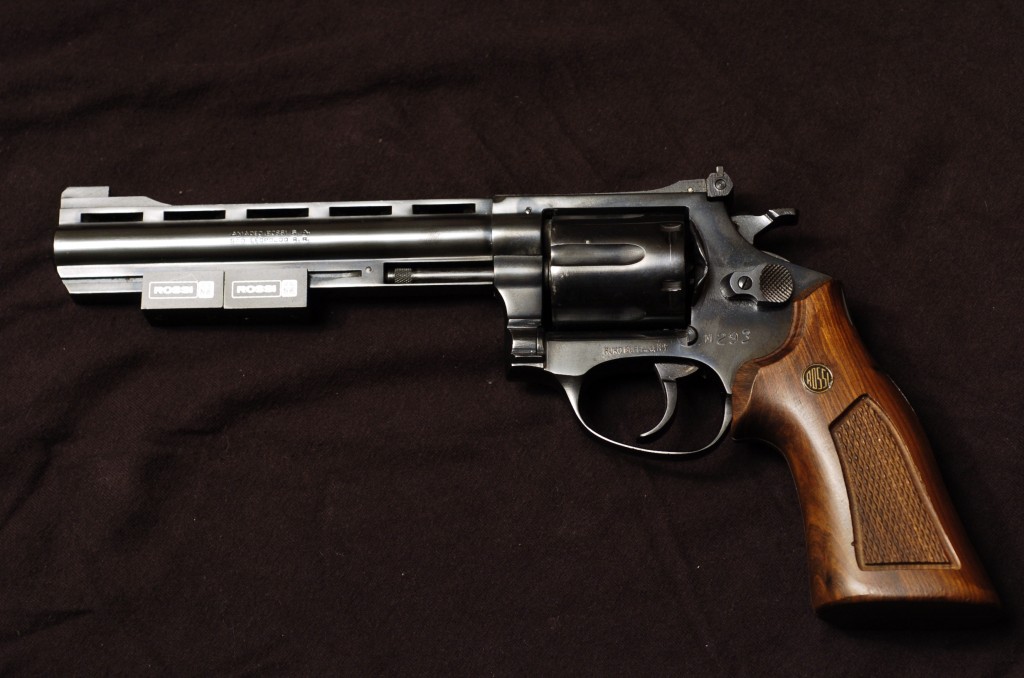
The full vent rib and underlug are reminiscent of many revolvers from the era. One of the unique things about the underlug however is the grooves along the side that allow the under barrel weights to slide front to back. There are set screws on the weights to lock them in place once the desired balance is achieved. The sights are excellent, and the stocks are very nice, if a little small. The trigger is excellent, and seems to be factory set. The firing pin is attached to the hammer, and the guns finish is very well executed.
The Rossi M293 is one of the most accurate revolvers I have ever had the pleasure of firing. While it was a fluke, I once managed to fire a 5 shot group of a little less than 2 inches at 100 yards using the gun. While that group was a fluke (I can’t shoot that well with an open sighted revolver) It is consistently exceptionally accurate with most loads. It loves wadcutters, and will also shoot heavy bullets pretty well too. I’ve shot a fair number of 130 grain bullets designed for the .30 carbine through the revolver, and had excellent results at 50 and 100 yards.
If you manage to find a Rossi M293 at a reasonable price, I suggest you buy it. If for some reason you decide afterward that you don’t like it, please contact me, and I’ll be happy to buy it from you!
Written on December 18, 2013
By Tony
in Repeaters, Rifles
After spending a little time at the range a few weeks ago with the Mauser 105, I am very pleased to report that the rifle will produce 1″ 10 shot groups at 50 yards consistently using CCI SV ammo, CCI blazer, and Aguilla SSS. The CCI SV was the best, averaging a little under 7/8″ for all 3 of the 10 shot groups I fired with it.
With the suppressor, using any type of subsonic or standard velocity ammo, the gun is just stupid quiet. I assume that the slight cushioning effect of the open bolt operation helps with that.
Written on
By Tony
in Revolvers
The Ruger Single six ‘SSM’ was one of the first guns chambered in the new .32 H&R magnum cartridge when it was introduced in 1986, with Ruger jumping on the bandwagon early on.
Over the last 2 and a half decades, there have been a number of versions of the Ruger single six in .32 H&R magnum. The version that I own is a first or second year production, with adjustable sights and a 5.5″ barrel. The single six frame seems very well suited for the class of cartridge. It’s always been a little large for the .22 LR NS Magnum, but the .32 seems to fit perfectly, with the frame providing enough weight to curb the small amount of recoil that the cartridge would have, but without being so large that the cartridge would be drowning in the gun, so to speak.
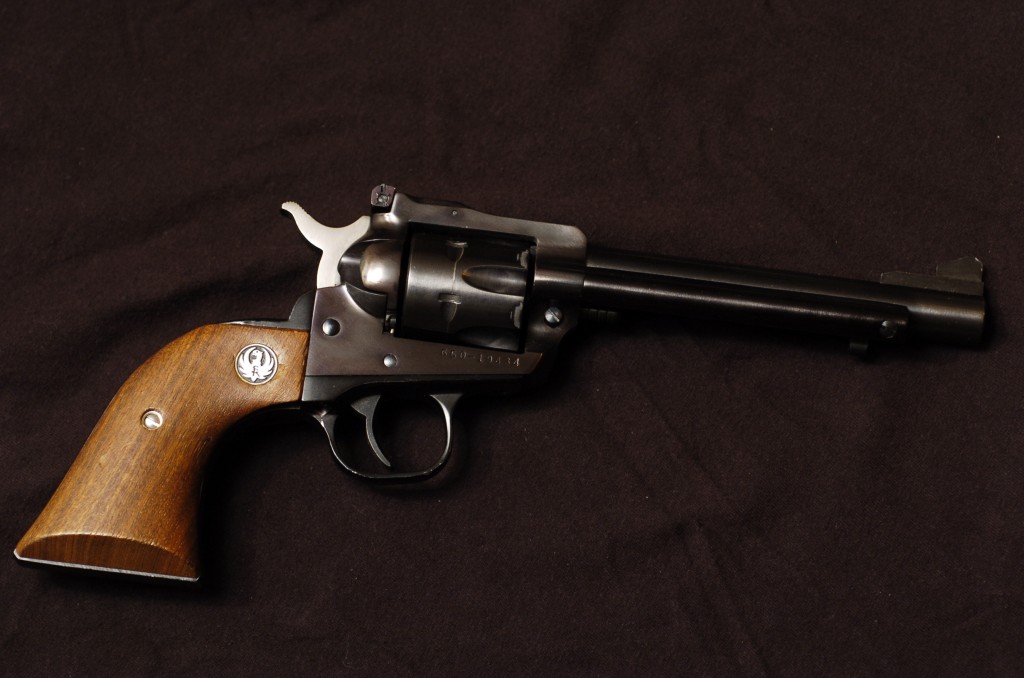
Most people rave about the accuracy of the early single six SSM’s but while I’ve found my gun to be acceptable accurate, I’ve never considered it something worth writing home about. That is, until I started pushing the loads a little harder than I do in most of my guns.
For some reason the Ruger seems to love speed. The harder I push the .32 H&R loads, the better the gun shoots. I try to always remain within book loads for all of my reloading, and more often than not, find myself closer to the minimum threshold as apposed to the maximum level loads. The Ruger is an exception, it loves when I push 115 grain lead bullets as fast as a book load possible can.
There are a number of other Ruger .32 caliber revolvers that I would like to pick up over time, but this one essentially fell into my lap one day, and I have really enjoyed it ever since. My first handguns were all single action revolvers, and as such, the platform holds a special place in my heart. New shooters always seem to like the ‘old six shooters’ as well.
Written on
By Tony
in Revolvers
Like the S&W models 631 and 31 that I’ve written about in previous installments, the Taurus model 741 is a small framed (about the same size as a S&W J-frame) .32 revolver with a 4″ barrel. Like the 631, and unlike the 31, the Taurus also has adjustable sights.
The Taurus 741 was available n both blued steel or stainless steel. The one I have is stainless with black rubber grips. It has a full under-barrel lug, and is chambered for .32 H&R magnum. The 742 was a frame mounted firing pin, and a simple set screw type lock on the back of the hammer (back the set screw out with the special ‘key’ and the gun won’t cock or fire).
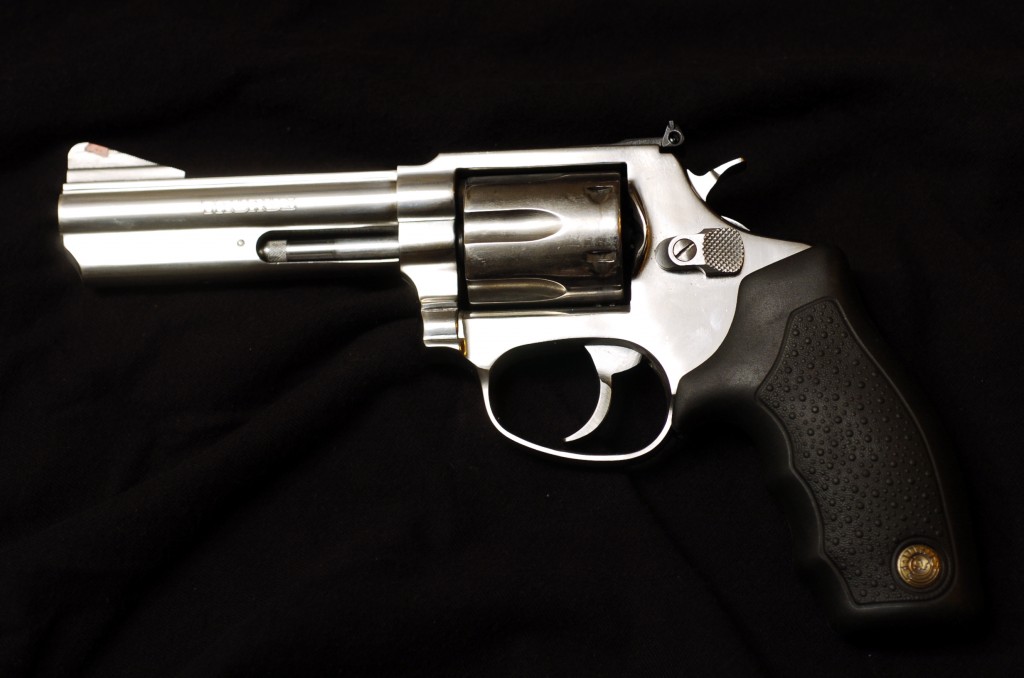
My version is exceptionally accurate. So much so that I never use it for accuracy testing when working up loads, because it always likes everything. Since the Taurus is worth probably less than half of what the smith 631 is, I often carry it in the field when I need a good trail or kit gun. The .32 H&R magnum wouldn’t be very strong medicine in bear country, but around these parts, it’ll put down anything I might encounter without much issue, as long as I do my part.
The Taurus 741 is probably one of my very favorite .32 revolvers. It’s light enough to be easy to carry, but heavy enough to hold steady when shooting, accurate, trouble free, and a real pleasure to shoot. I wish that Taurus would re-introduce the model, I’d buy at least two more, just so I’d have some to give to my kids one day.
Written on December 9, 2013
By Tony
in Uncategorized
My last post on the subject of .32 revolvers was about the excellent S&W model 631. This post is about it’s older brother, the model 31.
The S&W model 31 is the progeny of the very earliest S&W ‘hand ejector’ model revolvers that got their start in 1896. With the introduction of their new hand ejector model, S&W also introduced the .32 S&W long cartridge. Originally loaded with black powder, the round offered improved performance over the predecessor, the .32 S&W cartridge.
That original hand ejector started it all, and since then, we’ve had nearly 120 years of “modern” revolvers. Virtually every double action revolver made in the last 90 years has been based on that original design, with very few mechanical changes. Even the massive X-frame .500 S&W magnum owes it’s design to the lowly .32 hand ejector.
The .32 hand ejector remained in production in one form or another from 1896 until the 1980’s. There are still occasional runs of modern variations, but there’s only been one in the last decade or so.
The model 31 that I own dates from the late 1960’s and sports a 4″ barrel. The model 31 is a blued steel J-frame in .32 S&W long caliber with a round but. I use smooth target grips on mine to give my hands a better purchase. With standard loads the gun is very accurate and shoots to the sights. With a 313445 bullet running at about 1000 FPS it’s a hard gun to beat for small game and field work.











